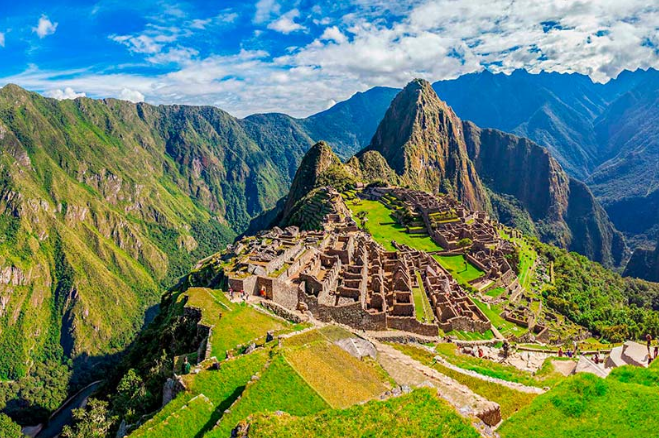The 2 Day Inca Trail with camping offers adventurers an extraordinary opportunity to experience one of the world’s most iconic trekking routes without committing to the traditional four-day expedition. This condensed version delivers the essential highlights of the ancient Inca pathway while accommodating travelers with limited time or those seeking a less physically demanding alternative to reach the legendary citadel of Machu Picchu.
Understanding the 2 Day Inca Trail Experience
The shortened Inca Trail route begins at kilometer 104 of the railway line connecting Cusco to Aguas Calientes. Unlike its longer counterpart, this trek compresses the most spectacular sections into an intensive yet manageable journey that combines archaeological exploration, stunning mountain scenery, and the unforgettable experience of camping along the sacred trail used by the Incas centuries ago.
This abbreviated route covers approximately 12 kilometers of trekking on the first day, taking hikers through cloud forests, past rushing waterfalls, and alongside dramatic cliff faces. The trail ascends steadily toward the sun gate, or Intipunku, where trekkers are rewarded with their first breathtaking view of Machu Picchu emerging from the surrounding peaks. The camping component typically occurs near the archaeological site or in the nearby town of Aguas Calientes, depending on the specific tour operator and permit arrangements.
What Makes the Camping Experience Special
Camping on the 2 Day Inca Trail creates an immersive connection with the ancient pathway that hotel stays simply cannot replicate. As darkness falls over the Sacred Valley, trekkers gather around campfires, sharing stories beneath star-filled skies that the Incas themselves once studied for agricultural and ceremonial purposes. The sounds of the surrounding jungle and the crisp mountain air create an atmosphere of authenticity that deepens appreciation for the journey.
Professional tour operators provide comprehensive camping equipment, including high-quality tents, sleeping bags rated for mountain temperatures, and comfortable sleeping mats. Experienced porters establish camp while trekkers explore nearby ruins, ensuring that when hikers return from their day’s adventure, a welcoming campsite awaits. Meals prepared by skilled camp chefs showcase traditional Peruvian cuisine, often featuring fresh local ingredients and catering to various dietary requirements.
The camping experience also fosters camaraderie among fellow trekkers. Sharing this challenging yet rewarding adventure creates bonds between travelers from different countries and backgrounds, united by their common goal of reaching Machu Picchu through the historic Inca pathway rather than simply taking the train.
The Trek Itself: Day by Day Breakdown
The journey begins early on day one, with departure from Cusco by train along the Urubamba River. The scenic railway journey provides glimpses of snow-capped peaks and traditional Andean villages before reaching kilometer 104, where the trek officially commences. The first archaeological site encountered is Chachabamba, a complex of ceremonial baths and religious structures that served as a checkpoint for travelers approaching Machu Picchu in Inca times.
From Chachabamba, the trail ascends through subtropical cloud forest, where orchids cling to moss-covered trees and hummingbirds dart between vibrant flowers. The challenging climb tests stamina but rewards persistence with increasingly spectacular views across the valley. After several hours of hiking, trekkers reach Wiñay Wayna, an impressive terraced complex whose name means “forever young” in Quechua. This archaeological jewel features intricate stonework, agricultural terraces, and a series of ceremonial fountains that demonstrate the Incas’ sophisticated understanding of hydraulic engineering.
Following lunch and exploration at Wiñay Wayna, the trail continues toward Intipunku, the sun gate that served as the main entrance to Machu Picchu. Arriving in late afternoon provides ideal lighting conditions for photography and a less crowded first impression of the citadel. After soaking in this iconic view, trekkers descend to their camping location, where they rest and prepare for the next day’s comprehensive exploration of Machu Picchu.
Day two begins before dawn, allowing hikers to enter Machu Picchu at opening time and experience the site in the soft morning light with fewer crowds. A professional guide leads a detailed tour lasting approximately two hours, explaining the history, architecture, and theories surrounding this mysterious city. The tour covers key areas including the Temple of the Sun, the Intihuatana stone, the Temple of the Three Windows, and the agricultural sector with its famous terraced fields.
Physical Requirements and Preparation
While more accessible than the classic four-day trek, the 2 Day Inca Trail with camping still demands reasonable fitness levels. The first day involves approximately six to seven hours of hiking with significant elevation gain, though the pace remains moderate with frequent rest stops. Altitude acclimatization proves crucial, as the trail reaches elevations exceeding 2,700 meters. Most experts recommend spending at least two days in Cusco before attempting the trek, allowing bodies to adjust to the thinner air.
Preparation should include cardiovascular training, such as hiking, running, or cycling, in the months leading up to the trip. Strengthening leg muscles through squats and lunges helps tackle the numerous stone steps along the route. Breaking in hiking boots well before departure prevents blisters and discomfort during the trek.
Essential Packing Considerations
Packing appropriately ensures comfort throughout the camping experience. Layered clothing proves essential, as temperatures fluctuate significantly between sunny afternoon warmth and cool mountain evenings. A quality rain jacket protects against sudden mountain showers common in the cloud forest environment. Comfortable, broken-in hiking boots with good ankle support prevent injuries on uneven ancient stone pathways.
Personal items should include sunscreen with high SPF, insect repellent, a refillable water bottle, water purification tablets, a headlamp for navigating camp after dark, and any necessary personal medications. A small daypack carries daily essentials, while porters transport the main camping gear and heavier equipment. Photography enthusiasts should bring extra batteries and memory cards, as the stunning scenery provides endless photo opportunities.
Permits and Booking Considerations
The Peruvian government strictly limits the number of people allowed on the Inca Trail daily to protect the ancient pathway from erosion and overuse. This restriction means permits sell out months in advance, particularly during the dry season from May through September. Booking at least three to six months ahead ensures availability, especially for travelers with fixed vacation dates.
All trekkers must book through authorized tour operators, as independent hiking is prohibited. These regulations help preserve the trail while ensuring visitor safety through guided supervision. When selecting an operator, research their reputation, porter treatment policies, and environmental practices. Responsible companies follow Leave No Trace principles, treat porters fairly with appropriate wages and equipment, and maintain small group sizes for a more intimate experience.
Best Time to Trek
The dry season from April through October offers the most favorable weather conditions, with clear skies and minimal rainfall making for pleasant hiking and camping. May through September sees the highest visitor numbers, creating a vibrant trail atmosphere but also increased permit competition. The shoulder months of April and October provide excellent weather with slightly fewer crowds.
The wet season from November through March brings afternoon rains and muddy trail conditions. However, this period offers advantages including easier permit availability, lush green landscapes, and dramatically reduced crowds. Trekkers willing to brave occasional showers may find the wet season provides a more solitary, contemplative experience.
Conclusion
The 2 Day Inca Trail with camping represents an ideal compromise for travelers seeking authentic Inca Trail adventure without the time commitment or physical demands of longer expeditions. This condensed route delivers the essential magic of hiking ancient pathways through cloud forests to reach Machu Picchu while the camping component adds depth and authenticity to the journey. The experience combines physical challenge with cultural immersion, archaeological wonder with natural beauty, and personal achievement with historical connection.
For those who dream of following in the footsteps of the Incas but face time constraints or fitness limitations, this two-day camping trek opens the door to one of the world’s greatest adventures. The memories forged while camping under Andean stars, the satisfaction of reaching Intipunku through your own effort, and the unparalleled first glimpse of Machu Picchu from the sun gate create an experience that transcends typical tourism. This journey transforms travelers into pilgrims, connecting them across centuries to the remarkable civilization that carved these pathways through impossible mountains, leaving behind a legacy that continues to inspire wonder in all who walk this sacred trail.

